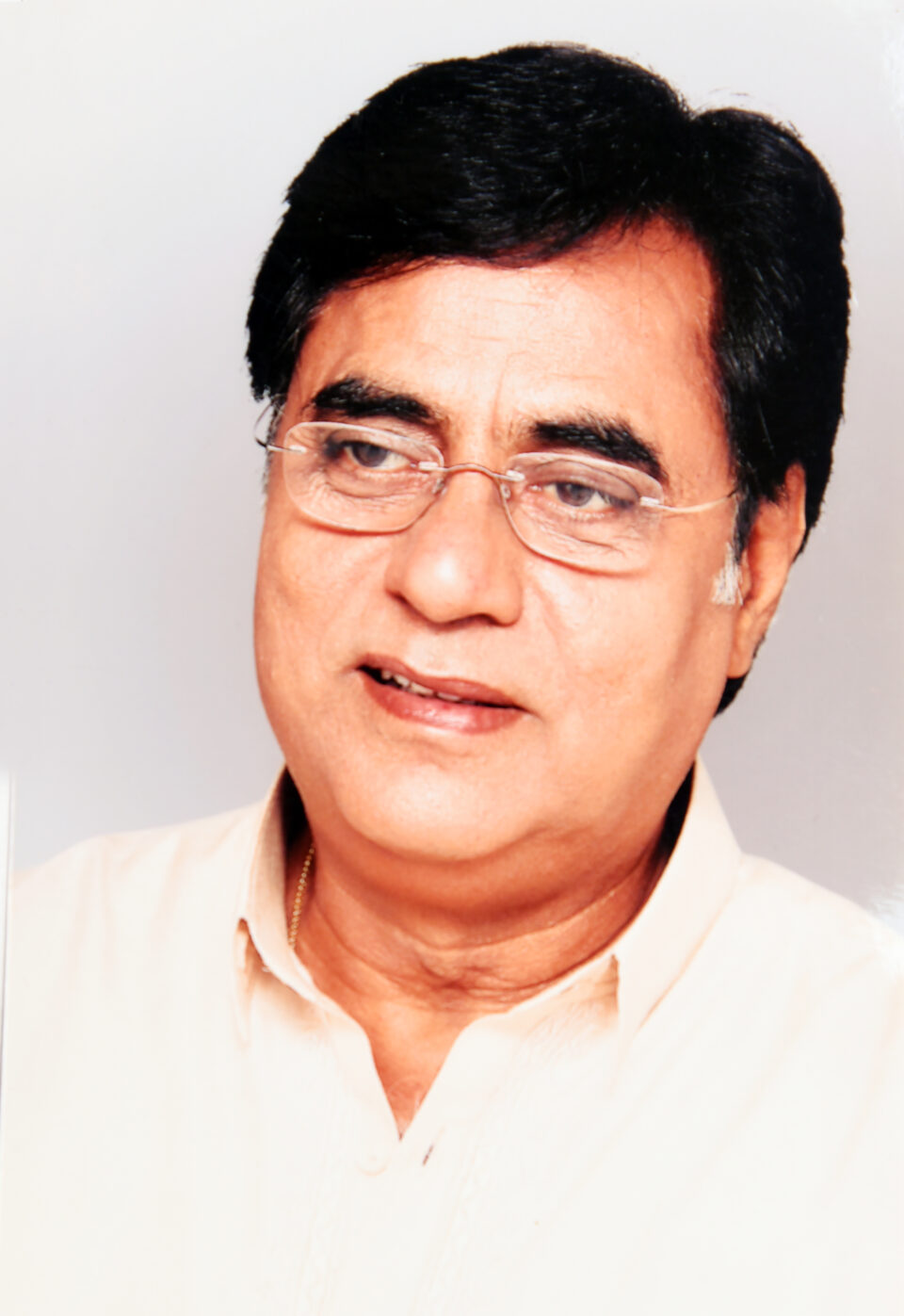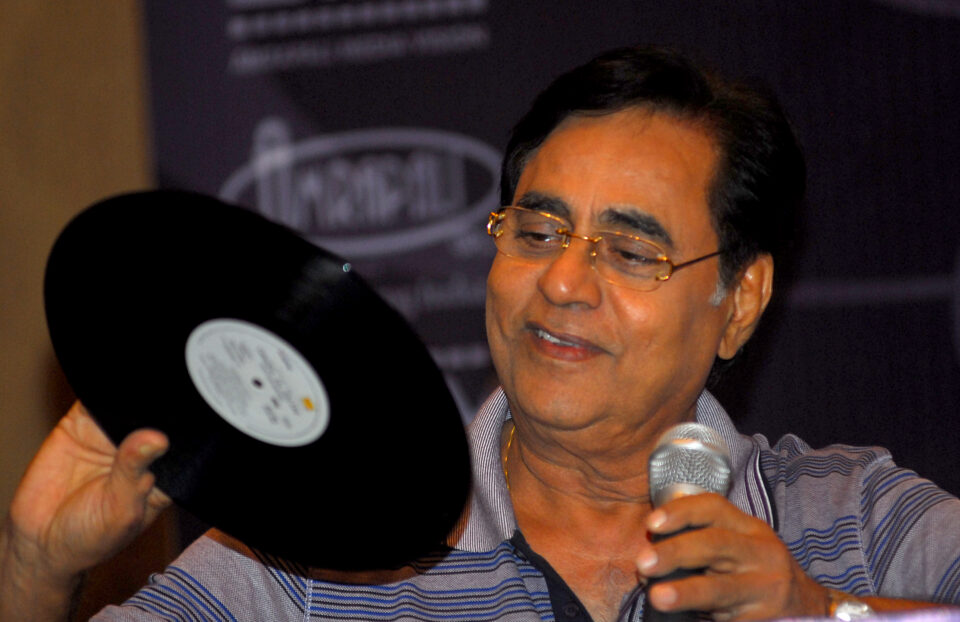Jagjit Singh: The Voice That Time Couldn’t Silence
On the anniversary of Jagjit Singh’s passing, we choose not to grieve his absence but to honor the lasting influence of his music in our lives
Isn’t it strange? How some voices can enter your life and stay there forever. Jagjit Singh’s voice is one of those. It doesn’t matter if you first heard him as a child or stumbled upon his songs as a heartbroken teenager but once he enters your world, he never really leaves, a voice that travels borders, generations, and the passage of time itself. It’s been over a decade since his untimely passing, yet his ghazals continue to echo in the hearts of millions young and old alike.
At 24, when you mention that you listen to Jagjit Singh’s ghazals, you often get puzzled looks. People either think you’re exceptionally wise for your age or question why you enjoy music that’s typically associated with an older generation. But the truth is, Jagjit Singh’s voice isn’t confined to any specific age group or time period. It spans across eras, moods, and emotions, offering something so profound that even the Gen Z crowd, notorious for their snack-sized attention spans, find themselves floating in the soothing tides of his voice. You might expect that growing up in the 2000s, amidst the rapid rise of pop and EDM, Jagjit Singh wouldn’t have had much influence on me.
For me, Jagjit Singh’s voice is part of my DNA, threaded through my earliest memories. I was around five or six, racing around the kitchen while my mother prepared rotis, with a CD player in the corner playing “Hothon Se Chhoo Lo Tum” as if it were a daily ritual. At that age, I didn’t grasp the meaning behind those lyrics; it was just a soothing melody that filled the background of my home, something I absorbed without even noticing. But as I grew older, I began to deeply appreciate the richness and significance of those words, the way he portrayed love, heartbreak, and the essence of life. My love for Jagjit Singh’s ghazals wasn’t a conscious choice; it’s something that has shaped who I am.
By the time I hit my teenage years, Jagjit Singh was basically my emotional mentor. People very often call me an old soul, and maybe that’s true. But if that’s the case, I credit it to the ghazals that nourished me. The love I learned to feel- deep, intense, unhurried came from these songs. While most of my friends are busy swiping left-right, getting lost in fleeting romances of modern-day dating, I’m somewhere else, sticking around in the safe spaces of “Tum itna jo muskura rahe ho, kya gham hai jisko chhupa rahe ho?” a line so subtle yet so piercing, it teaches you that even a smile can carry sorrow. Jagjit Singh taught me that love isn’t always fireworks, it’s often in the quiet sighs and unspoken words, in the way someone remembers you when you’re not around.
It’s impossible to discuss Jagjit Singh without acknowledging the cultural significance of his music. He brought ghazals from the niche corners of Indian classical music into the mainstream, balancing the genre for the masses. Before Jagjit Singh, ghazals were often considered the domain of connoisseurs, something very complicated, classical and exclusive. But with his breakthrough album The Unforgettables in 1976, he redefined the genre, making it accessible and relatable to the common man. He paired ghazals with simple, relatable themes of love, loss, longing, and in doing so, he created a body of work that felt personal without watering down the essence like it was written for you.
Let’s look at some numbers for a moment. Jagjit Singh sold over 11 million records during his lifetime, a flabbergasting feat for a ghazal singer in a country where Bollywood music reigns supreme. His albums like The Unforgettable and A Sound Affair brought ghazals into mainstream consciousness, making him a household name. His duet albums with his wife Chitra Singh revolutionized the genre leading to an estimated 100 million streams of his catalog on platforms like Spotify and YouTube today.
What sets Jagjit Singh apart, even after his passing in 2011, is the way his music continues to connect with listeners of all ages. As of 2024, he has over 4 million monthly listeners on Spotify. These aren’t just individuals reminiscing about the past; many are encountering his music for the first time, captivated by the raw emotion in his voice. His songs, once heard on vinyl and cassettes, are now featured in
“breakup playlists” on Spotify and shared through Instagram reels, introducing a fresh audience to his brilliance.
But for all his influence, there’s no shortage of debate over whether ghazals are a dying art form. Search “Are ghazals dead?” on Quora, and you’ll find hundreds of responses shedding tears that ghazals have lost their audience after Jagjit Singh’s passing. There’s an undeniable sentiment that no one has been able to fill the void he left behind. Many point to the fact that no ghazal singer has achieved the same mainstream popularity since his death. In an age dominated by Bollywood dance numbers and 30-second viral reel tracks, ghazals can feel out of place. Sure, mainstream music has shifted towards fast beats and catchy hooks, but Jagjit Singh’s songs still quietly thrive in playlists and midnight musings of many, even in the Gen Z crowd. The beauty of Jagjit Singh’s music is its timelessness. His ghazals, like “Yeh Daulat Bhi Le Lo, Yeh Shohrat Bhi Le Lo,” offer a warmth that transcends decades. It doesn’t matter if you’re 60 or 16, there’s something universal in the way his voice dips into the human experience and brings up all the emotions we often try to bury and its almost funny how much depth there is in ghazals when so much of today’s music seems to skim the surface.
But to say ghazals are dying is a stretch. They live on, even if quietly, in the hearts of people like me, and, evidently, in the playlists of a generation that’s finally realizing that not everything needs to be fast, loud, or fleeting.
And it’s in these quiet moments, shared among friends, that the essence of his music truly shines. Picture this: a cozy evening with a few close friends, each nursing a drink and surrounded by the remnants of a long week. Laughter bubbles up, but beneath the surface, there’s an unspoken heaviness—everyone’s carrying their own baggage of love lost and dreams dashed. It’s in these moments of camaraderie that Jagjit Singh’s voice enters, weaving its way into the air, creating an atmosphere that feels both intimate and profoundly shared.

“Jin jakhmo koi waqt bhar chala hai, tum kyu unhe chede jaare ho?” he croons, and suddenly, the vibe shifts. Those words hit home like a perfectly timed punchline. It’s as if Jagjit Singh is sitting right there with us, reminding us that it’s okay to poke at our wounds, that time doesn’t necessarily heal everything.
What’s funny or sad, depending on how you look at it, is that some companies even tried to jump on this ghazal revival, and their solution was lofi versions of Jagjit Singh’s songs. Honestly, why would anyone do that? Lofi ghazals is like trying to remix a sunset or auto-tune the sound of rain. Ghazals aren’t background noise, they are meant to be felt. The depth of the lyrics, the weight of his voice, these are things that don’t need soft beats or fancy production tricks but they need silence and attention. Anything less feels almost disrespectful, like trying to serve gourmet food on paper plates. Unsurprisingly, these lofi attempts bombed. They were like trying to paint over a masterpiece with watercolors, it just didn’t work, at least for me.
But let’s not just overplay the romantic sentiment. Jagjit Singh was a man of many layers. His music combined joy and sorrow, turning heartache into beauty. After losing his son, his music really deepened, tapping into the raw feelings of grief and healing. Take “Chitthi Na Koi Sandesh,” for example—it channels that pain of separation into a haunting melody that hits you right in the feels. His talent for turning personal heartbreak into something everyone can relate to is truly his greatest gift to us.
So, what is it about Jagjit Singh that keeps his spirit alive, even after he left this world? Is it the way he made poetry accessible, or how he took us on a journey through love’s many phases? Perhaps it’s the sheer honesty of his art. In an age where music often feels manufactured and hollow, Jagjit Singh’s ghazals burst with authenticity. They remind us that it’s okay to feel deeply, to embrace our emotions, to allow ourselves to be vulnerable.
As we mark yet another year without him, it’s easy to get caught up in the idea that something irreplaceable was lost when he left. And maybe that’s true in some ways. But Jagjit Singh gave us enough to carry forward, to hold onto, and to pass down to the next generation. As long as there are hearts that love and souls that ache, his voice will never be silenced. So, to those who say ghazals are dying: they aren’t. They’re just waiting for you to slow down enough to listen. Jagjit Singh didn’t make music for a moment—he made music for a lifetime. And lifetimes don’t end with passing trends or fads. They live on, quietly but powerfully, in the memories we keep and the songs we carry.





